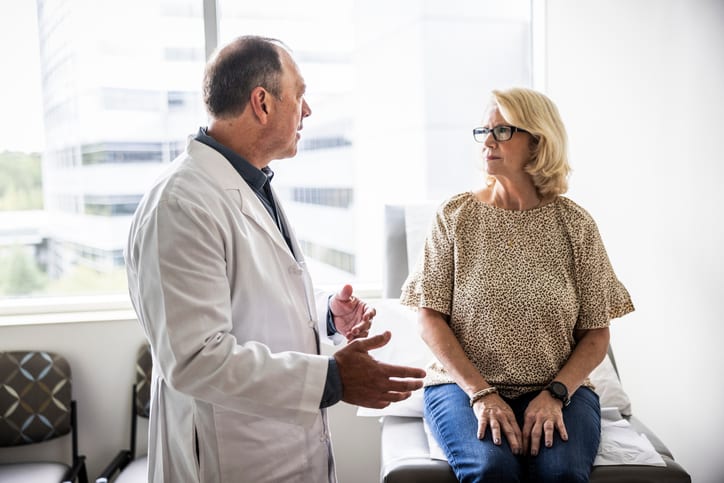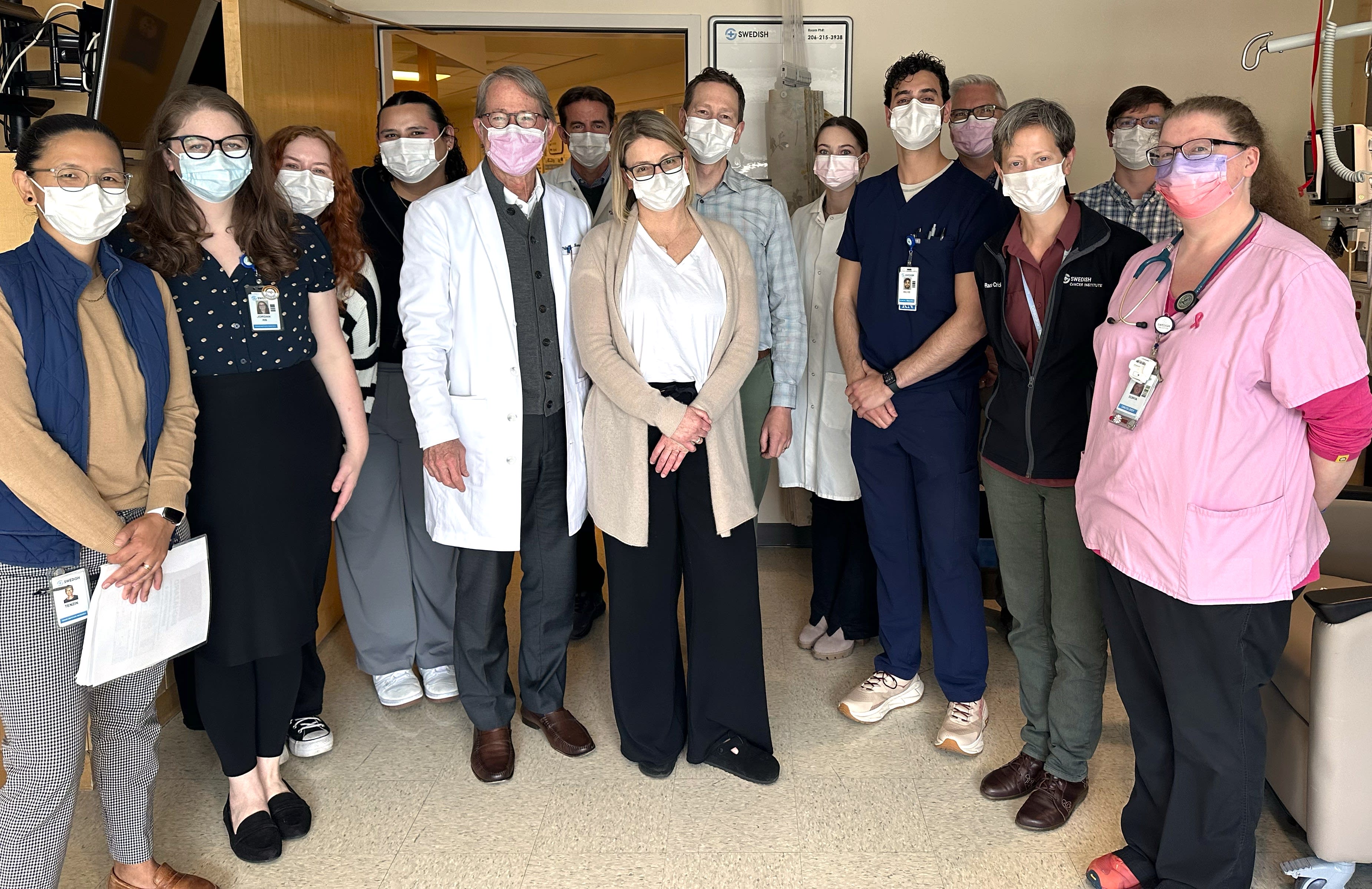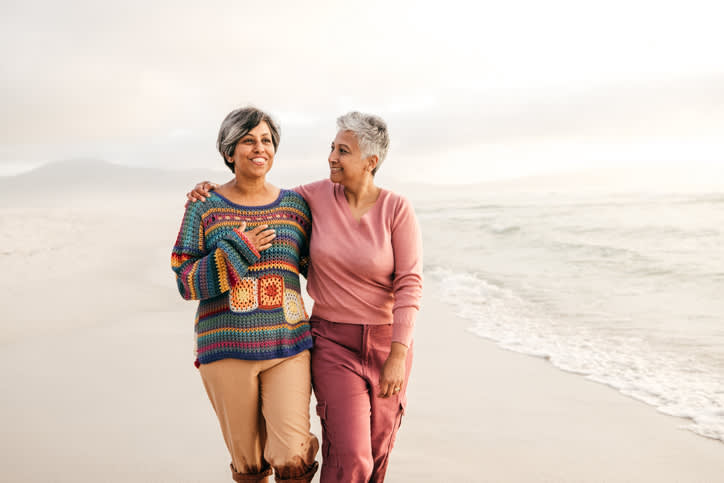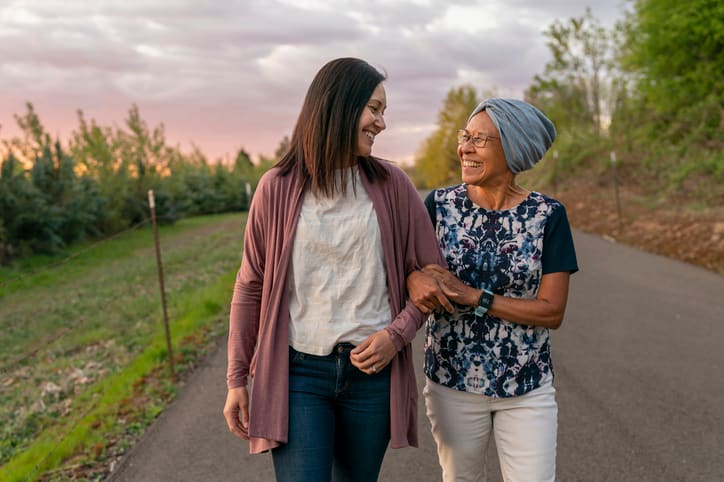Skin cancer prevention: protect your skin all year round
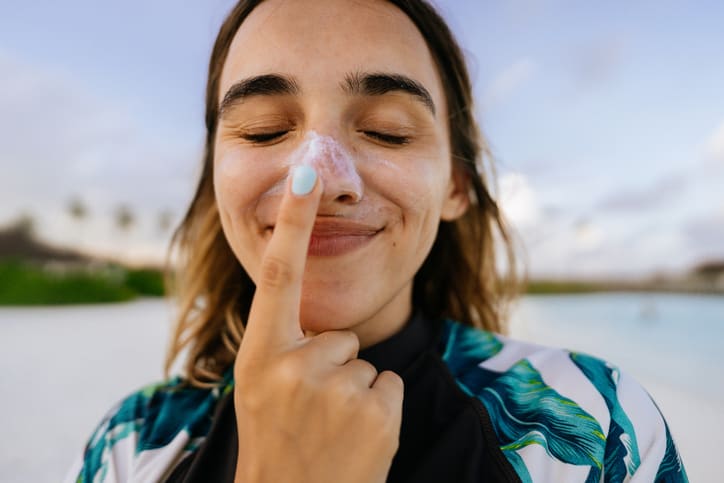
[6 MIN READ]
In this article:
- See your dermatologist to get your skin checked once a year, because skin cancer is most easily treated when detected early.
- Protect your skin all year long. Whether you're enjoying a summer day at the beach or hittng the slopes in the winter, be sure to cover exposed skin and wear sunblock.
- Listen to the inaugural episode of our "Talk With A Doc: Cancer, Cures and Coffee" podcast featuring Providence Swedish oncologist Kelly Paulson, M.D., discussing melanoma and the latest advances in detection and treatment of this serious type of skin cancer.
Skin cancer prevention: Protecting your skin year-round
You could call ultraviolet (UV) radiation one of the sneakiest dangers that your body faces. UV rays can penetrate your skin in the more traditional ways, such as when you have direct sun exposure — or they can harm you in more subtle ways, such as reflecting off of snow and ice onto your skin. While skin cancer is the most common cancer in the United States, it’s also the most preventable.
Understanding skin cancer and UV exposure
There are many different kinds of skin cancer, but the most common types are basal cell carcinoma, squamous cell carcinoma and melanoma.
The skin has two main layers — the epidermis, or outer layer, and the dermis, or inner layer. Skin cancer begins in the epidermis, which is composed of three kinds of cells:
- Squamous cells – form the top layer of the epidermis
- Basal cells – located under the squamous cells
- Melanocytes – cells that make pigment and are in the lower part of the epidermis
Basal and squamous cell carcinomas begin in the basal and squamous layers of the skin, respectively, and are the most common types of skin cancer. Melanoma begins in the melanocytes, which is less common than basal cell carcinoma and squamous cell carcinoma, but it is more aggressive and has a higher risk of spreading to other parts of the body.
Sun safety isn’t just for summer
While it’s natural to think of protecting your skin when the sun is blazing during the peak of summer, the hottest season of the year isn’t the only time you should be careful.
Winter UV risks: Skiing, reflection and higher elevation
If you don’t wear sunscreen while you’re skiing or snowboarding, you could be in for a painful sunburn — and an increased risk of skin cancer. That’s because snow reflects up to 80% of the sun’s UV light, so the rays hit you twice. If you’re skiing or enjoying other winter activities at a high elevation, you’re in even more danger — for every 1,000 meters you ascend, UV exposure can increase by up to 10%.
Indoor UV risks: Tanning beds
One of the biggest threats to your skin is located right in your local shopping center. Dr. Fischer cautions that everyone should avoid tanning beds — especially teenagers. According to the American Academy of Dermatology, tanning bed use before age 20 can increase your chance of developing melanoma by 47%. Each time you use a tanning bed, the risk increases.
While it may be tempting to try a tanning bed so you can keep your skin looking good throughout the year, the risk to your long-term health just isn’t worth it.
Skin cancer prevention best practices
There are several different ways you can protect your skin from harmful UV rays.
- Choosing the right sunscreen and SPF levels
Experts advise using a broad-spectrum sunscreen — at least SPF 30 — every two hours when you’re in the sun. Reapply more often if you are sweating. If you are just going in and out of the car, you can reapply every four hours; if you are in direct sun, every two hours; and in direct sun and perspiring, every half hour. It’s important to avoid sunburn at all costs.
- Protective clothing and shade strategies
Ultraviolet protective clothing and rash guards have gotten more popular, both for kids and adults. They offer all-day protection without having to reapply sunscreen. If you are gardening or are in the sun for a long time, wear a wide-brimmed hat. It’s also a good idea to seek shade whenever you can.
The importance of early detection
Like many other cancers, skin cancer is most treatable when you detect it early. Adults are encouraged to get a skin check once a year. You can also keep an eye on your skin yourself between skin checks. Use these ABCs to evaluate moles during self-exams:
- A = asymmetry: Does one side of a mole match the other side?
- B = border: Is it ragged or smooth?
- C = color: Is it many different colors?
- D = diameter: Anything above 6 millimeters (the size of a pencil eraser) can be — but isn’t necessarily — worrisome.
- E = evolution and everything else: Are there any changes in color, size or look of the mole?
When should you see a dermatologist?
If you notice any of the above signs in one or more spots on your body, make an appointment with a dermatologist. If you haven’t spotted any signs but are concerned about your risk, you may want a baseline exam with a dermatologist.
Remember these skin-protection basics
- The importance of protecting your skin no matter what the weather is outside. There is no such thing as zero UV unless it’s completely dark out
- The best sun protection, which includes clothing as well as sunblock.
- Paying attention to the type of sunblock you use. Some are mineral-based, and some are chemical-based. If you find that you are sensitive to high amounts of chemicals, consider should switching to the mineral-based sunscreens.
Listen to the inaugural episode of "Talk With A Doc: Cancer, Cures and Coffee" with Ashwani Rajput, executive medical director of the Providence Swedish Cancer Institute
In this episode, we dive deep into the topic of Melanoma, one of the most serious types of skin cancer.Dr. Kelly Paulson, M.D. a medical oncologist at Swedish Cancer Institute First Hill in Seattle, shares her expertise on the importance of early detection, risk factors, and the latest advancements in treatment. Learn how to protect yourself and your loved ones from Melanoma and discover the role of the immune system in fighting cancer. Don't miss this informative and engaging discussion.
Learn more and find a physician or advanced practice clinician (APC)
If you have questions about melanoma or protecting yourself from the sun’s rays, contact the dermatology department at Swedish. We can accommodate both in-person and virtual visits.
At the Providence Swedish Cancer Institute, we know that no two cancers are alike. That’s why we focus on you — not your disease. If you need cancer care or are looking for testing to determine your cancer risk, we can help.
You can also learn more about available clinical trials. Our physician investigators and researchers are involved in hundreds of ongoing trials involving most types of cancer.
Whether you require an in-person visit or want to consult a doctor virtually, you have options. Swedish Virtual Care connects you face-to-face with a nurse practitioner who can review your symptoms, provide instruction and follow up as needed. If you need to find a doctor, you can use our provider directory.
Additional resources
Fun in the sun? Remember to protect your skin!
Harnessing the power of the body’s own immune system to treat (and defeat) cancer
Melanoma is a common cancer. Learn about signs and treatments.
No more excuses! It's time for that wellness checkup
This information is not intended as a substitute for professional medical care. Always follow your health care professional's instructions.
Follow us on Facebook, Instagram and X.
